BROCADE
GLOXINIA | F1 SINNINGIA SPECIOSA / SEED
Brocade is an impressive, double-flowering series that is quite showy and ideal for gift and indoor floral sales. Available as a Mix only, Brocade is recommended for 4-5-in pot production. Its small flexible leaves make for successful high density production and easy sleeving for shipping.
- Fully double flowers
- Small flexible leaves for high density production, easy sleeving and shipping
- Available as a Mix only
Stage 1 (days 1-8) Sow pelleted seed into a 288-cell tray filled with a
sterile and well drained media with good aeration. A slightly fertilized
peat is recommended and works well. For optimum maintain a
temperature of 72-75°F/22-24°C. Cover only with a thin layer of coarse
vermiculite to allow some light for germination. Trays can be covered
with thin plastic, if necessary, to maintain moisture but if covered do not
expose trays to direct sunlight to avoid overheating.
Stage 2 (days 9-21) Seedlings have now emerged and cotyledons are
present. Maintain air temperature between 68-72°F/20-22°C. Lower
humidity to 20-30% and fertilize with 75-100 ppm nitrogen from a wellbalanced calcium nitrate-based fertilizer around day 10. Gloxinia is
sensitive to boron deficiency so maintain media pH between 5.8 and 6.2
and supply 0.25 pm boron when fertilizing.
Stage 3 (days 22-40) Gradually increase the fertilizer concentration to
100-150 ppm N to maintain healthy growth as the seedlings progress.
The young foliage is sensitive to cold water which causes burning. To
avoid damage to the foliage when watering overhead, the water
temperature must be above 50°F/10°C. This is commonly known as
“ring spot”. You should heat the water if this is a concern. During
winter the young seedlings benefit form supplemental HID lighting at
300-500-foot candles/3,200-5,400 lux for 16 hours. Under high light
conditions seedlings benefit from a light shade of 40-50%. Do not
exceed 2,000-foot candles/21,500 lux.
Stage 4 (days 40-42) The plugs should have 4 true leaves and are
approaching transplant stage. Transplant on time to avoid root bound
plugs. Overgrown transplants flower prematurely with less flowers on
smaller plants. Reduce fertilizer levels and lower the temperature down
to 65°F/18°C to tone the plants.
Media: Select a sterile well drained media with good aeration.
Potting: Brocade is best suited for 5 inch/12.5 cm. pots. Plant the
seedlings down so that the first set of “large” leaves is level with the
media. Use care not to break off smaller leaves as it may invite disease.
Drench with a broad-spectrum fungicide after transplanting.
Spacing: Plants can remain pot tight for six to seven weeks after potting.
Afterward, space the plants for finishing
Temperature: 0ptimum day temperature is 72°F/22°C, with the night
temperature no lower than 65°F/18°C. Temperature below 60°F/15°C,
delay flowering and increase production time.
Watering and Fertilization: Gloxinias perform best with even moisture
and not allowed to dry out and wilt, which causes stunting and delayed
flowering. For the first weeks following transplant fertilize at 100 ppm
nitrogen using a well-balanced calcium nitrate-based formulation. After
plants are established apply 150 ppm nitrogen for best performance.
Gloxinia is sensitive to boron deficiency characterized by deep dark
green foliage, crinkled leaves and tip abortion. Maintain the media pH
between 5.8 and 6.2 and apply 0.25 ppm of boron when fertilizing.
Lighting: Optimum light level is 2,000-2,500-foot candles/ 21,500-
27,000 lux. For best results avoid strong sunlight. For winter growing
apply supplemental lighting at 500-foot candles/5,000 lux for 10 hours.


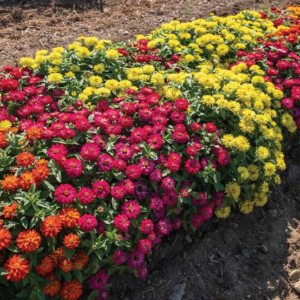


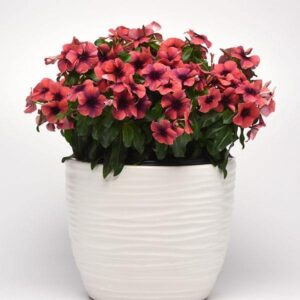
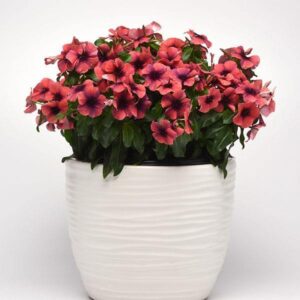
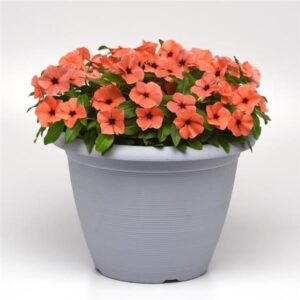
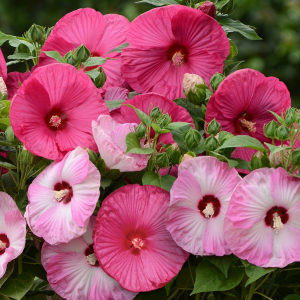
Reviews
There are no reviews yet.